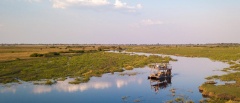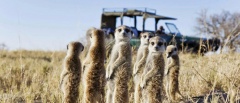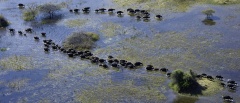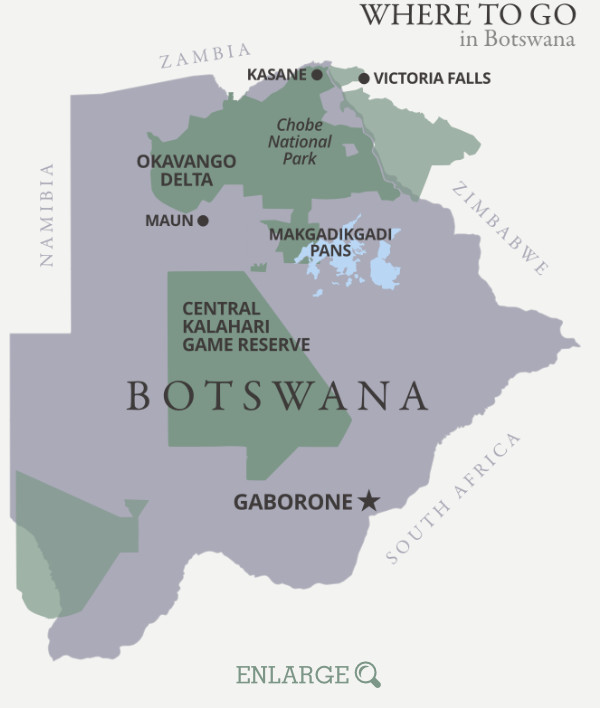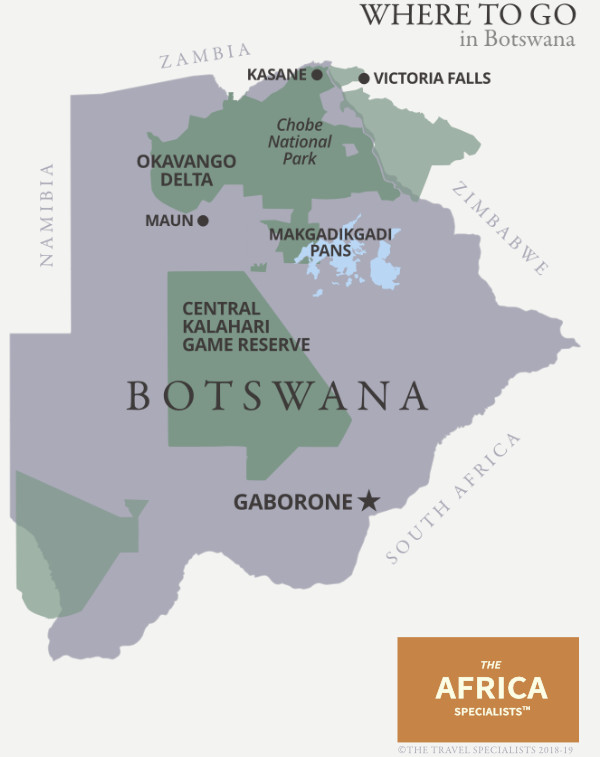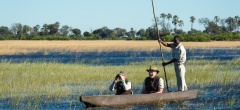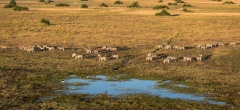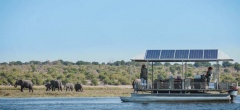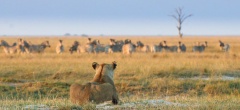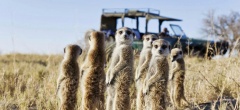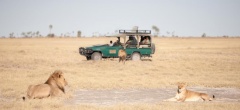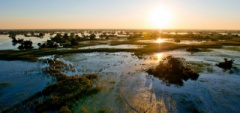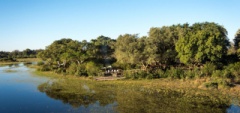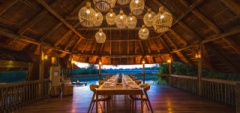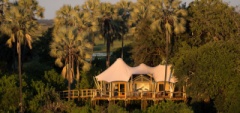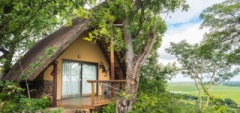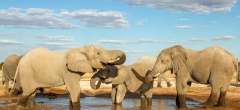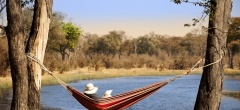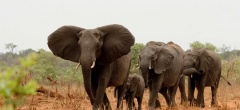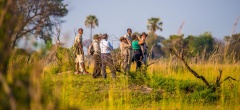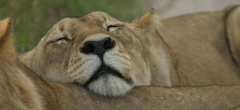Botswana
The jewel in Africa's safari crown
There are three key sociological and geographical elements that have played a key part in the history of Botswana, what is, arguably, Africa’s most pristine wildlife destination. The first of these is the yearly rainfall in the Highlands of Angola (See:The Okavango Delta for more information). The second being the creation of the Moremi Game Reserve in the late 1960s, a pioneering wildlife conservation decision that has given Southern Africa a haven for its wildness and wildlife.
The final decision was made in the 1980s when much of the Okavango Delta and the Chobe waterfronts were becoming overrun with self-driving tourists who were paying meagre park fees but leaving a high impact on the land they were visiting. The decision was made by the then government to increase the park fees tenfold…a move that has established Botswana as the most pristine but also the most expensive safari destination in Africa!
Where to go on safari in Botswana?
The Okavango Delta
Famous the world over for being one of the most pristine but also unusual safari destinations in Africa, the reasons for coming to what is, essentially, a floodplain, are multitudinous but, in the main, most will head here between the months of April and October, as the famous floodwaters run through the delta and provide a rally call for many of the animals throughout the southern parts of Africa. Read More…
Chobe National Park and waterfront
Arguably the next most known region of Botswana is along the Chobe River and down into Chobe National Park. This region, to the north east of the country, is famed for the vast herds of elephant that emerge from the cathedral mopane forests and come down to the waters edge to bath and drink during the day and in the evenings. Many operators to Botswana would argue that a trip to this region must be done to experience the country as a whole. We would probably argue that this area is still one of the busiest in the country and, as such, a visit to the less populated Linyanti River or Savuti Spillway would be a preferable option. Read More…
The Linyanti River and Savuti Spillway
As mentioned above, formed through the overflow from the floodwaters of the Okavango, these rivers eventually make their way through to the Chobe River but, until the Chobe area, these are predominantly concession areas and, as such, provide a much more private and exclusive experience. Read More…
The Makgadikgadi, Tau and Nxai Salt Pans
Formed through the drying of the waters that used to run all the way down from the Angolan Highlands, these salt pans created a seasonal migration of zebra that head into the pans when the rains of the southern hemisphere summer arrives between December and March. For the rest of the year they provide one of the more bizarre locations for safari and wildlife viewing. Read More…
Central Kalahari Game Reserve
At an approximate size of 53,000 square kilometres the Central Kalahari (or CKGR) is one of the largest game reserves in the world and creates a natural sand barrier from west to east across the centre of Botswana. Often described as a destination for seasoned safari-hands rather than first timers to safari, this is an area of subtle differences in topography and, in the main, open wide spaces. The game viewing here can be sporadic but if you are aiming for a sense of African space and seclusion then a visit here can be very rewarding. Read More…
Does Botswana have any beaches? This is a question we are often asked as a relaxing beach stay is often combined with the relative activity of a safari holiday. Unfortunately as a land locked country, there are now beaches to visit in Botswana itself but, with access through Johannesburg the excellent beaches of Southern Mozambique are certainly possible or, for those on more of a time and budget restriction, it is also possible to head up to Zambia and visit the Victoria Falls for a few nights where there are plenty of great properties to choose from where relaxation is the name of the game!

